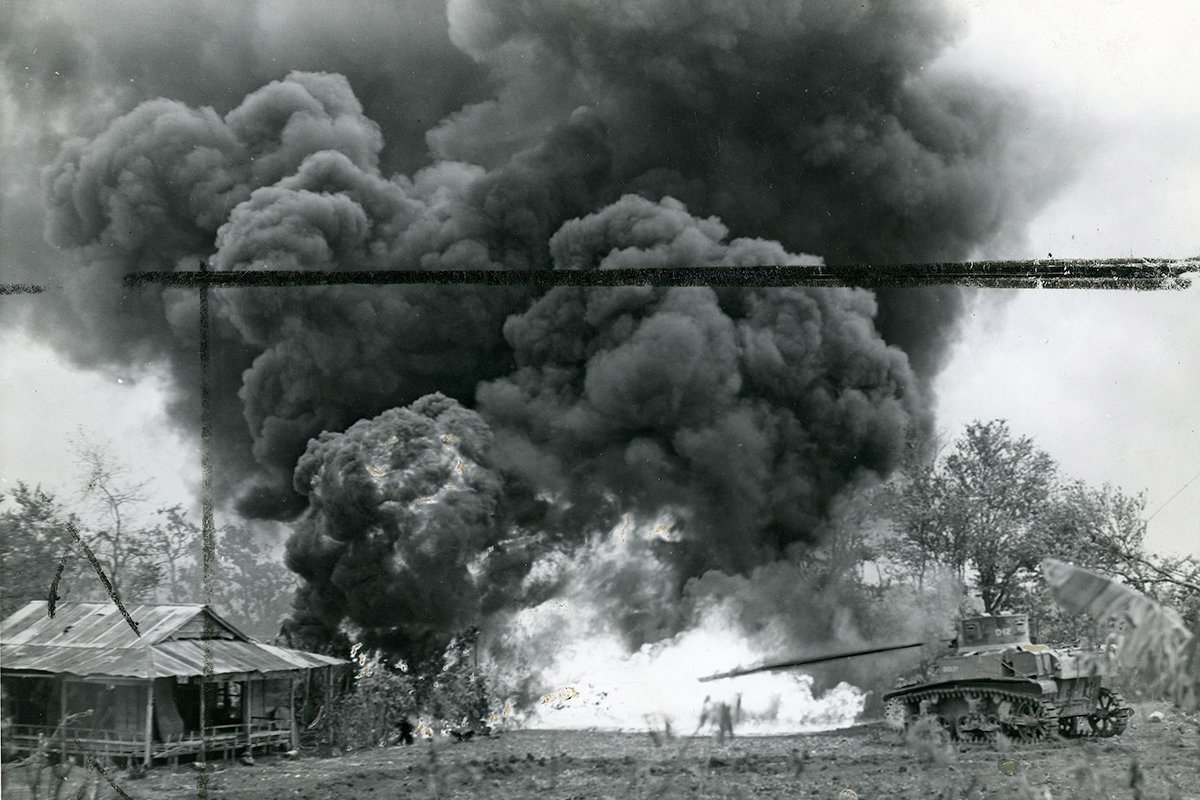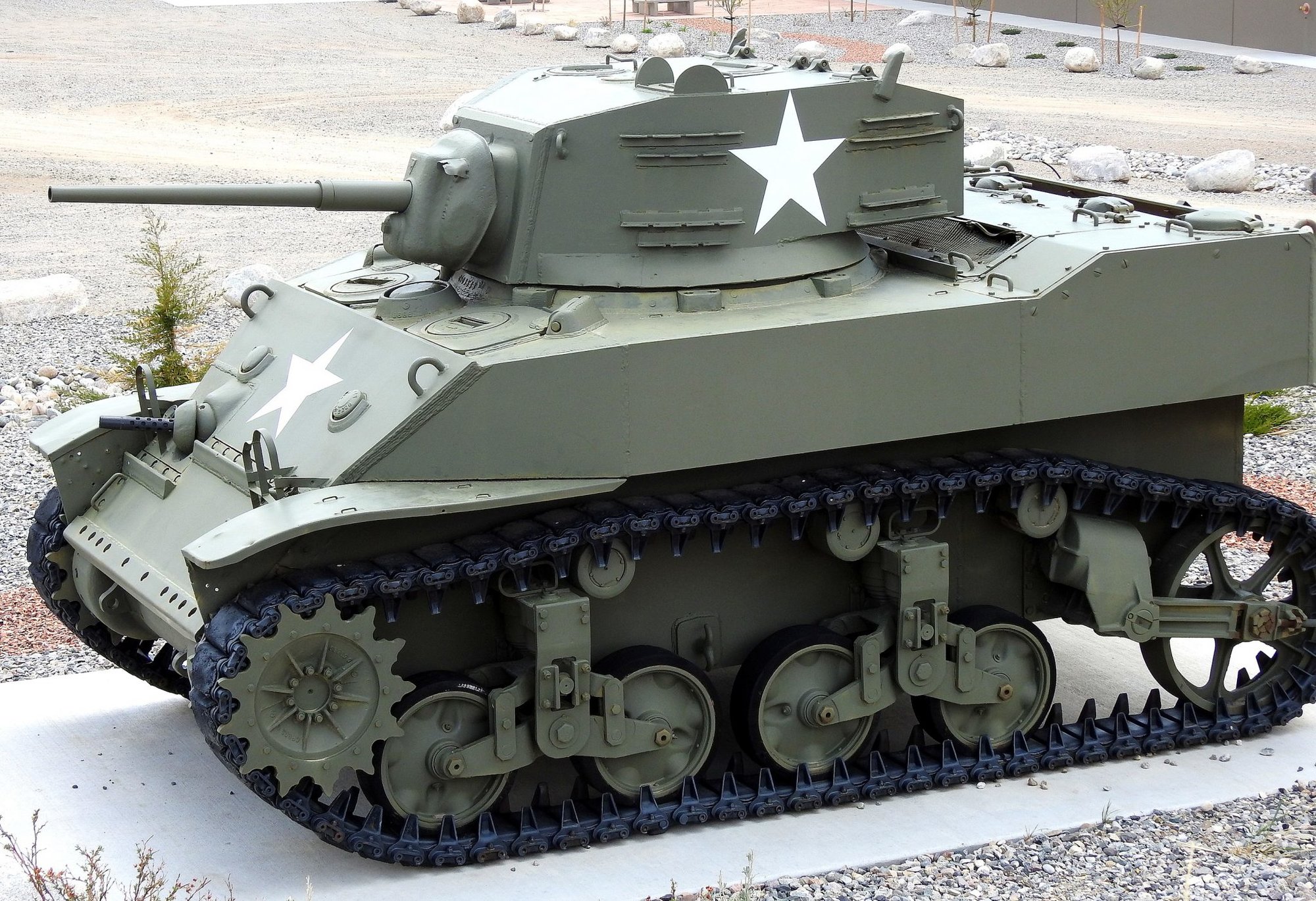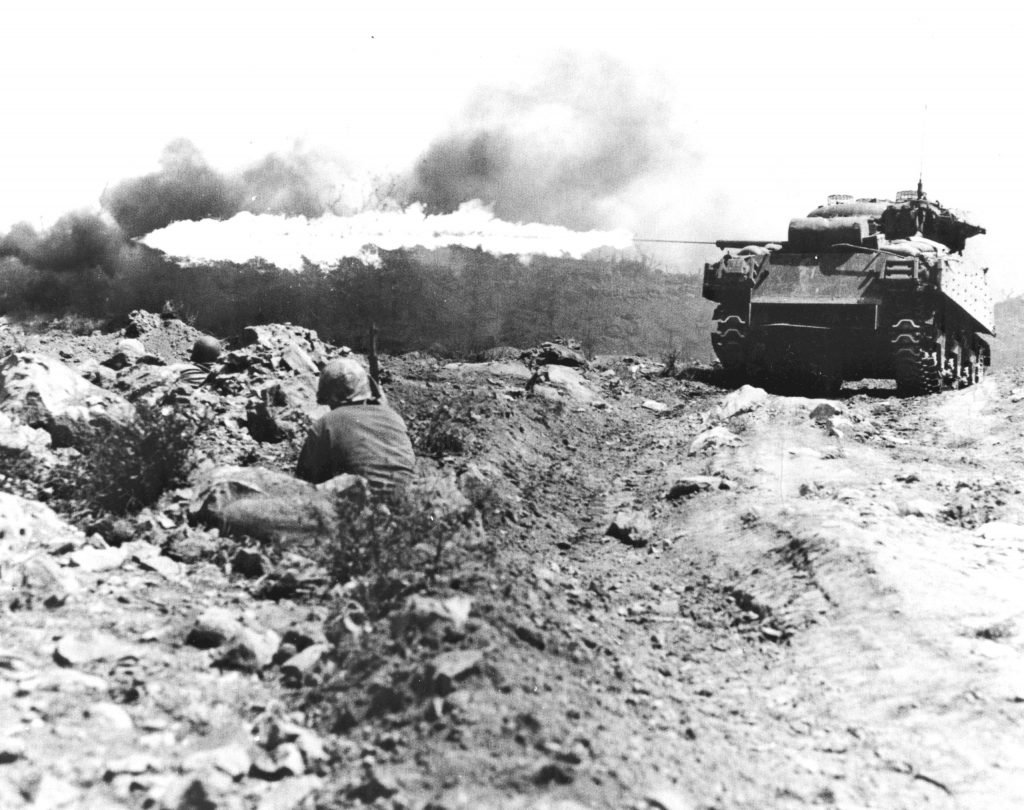
Marines use a “Satan” to incinerate a Japanese pillbox on Saipan. Photo courtesy of Wikimedia Commons.
During the island-hopping campaigns in the Pacific during World War II, US soldiers, sailors, and Marines assaulted sophisticated cave complexes and entrenched Japanese positions. At the outset, conventional small arms and artillery did little to dislodge Japanese troops ensconced in camouflaged bunkers, pillboxes, and caves. US Marines at Guadalcanal devised a solution on Jan. 15, 1943 — the M1 portable flamethrower. A team of engineers supporting 8th Marines, 2nd Marine Division, crawled to within 25 yards of a Japanese beach installation and engulfed three bunkers with liquid hellfire.
The tactic had a fatal flaw, however. It required that Marines hump 60-pound bottles of fuel on their backs through the jungle, leaving the flamethrower operators dangerously exposed to enemy fire during hazardous clearing missions. The heavy and unmistakable fire-spewing weapons were instant targets for Japanese sharpshooters.
Col. George Unmacht, a US Army chemical officer whose military career spanned 44 years, led the effort to produce mechanized tanks with mounted flamethrowers at the Chemical Warfare Depot at Hawaii’s Schofield Barracks.
“Ironically, it was considered perfectly proper to ruthlessly burn up the enemy, but absolutely inhumane to use gas,” Unmacht wrote in a 1948 report.

On April 15, 1944, a converted M3 light tank called the “Satan” demonstrated its capabilities in front of officers from the Army, Navy, and Marine Corps. A portable flamethrower was modified to fit into the tank’s bow machine-gun mounts. Lt. Gen. Holland Smith, colloquially known in military circles as “the father of modern US amphibious warfare,” immediately requested 24 Satans following the demonstration.
The US Navy Seabees at the Schofield Barracks were ordered to assist in outfitting the Satans before they departed for war. The Satan tanks “used compressed carbon dioxide as the propellent gas, had a fuel capacity of 170 gallons, and a range of 40 to 60 yards with oily fuel or of 60 to 80 yards with thickened fuel,” according to a report from the US Army’s Chemical Service.
In June 1944, Marines used the Satan tanks during mopping-up operations on Saipan. After the operators had gained experience, the tanks saw more action in other assaults, playing a lead role, for example, in overcoming Japanese strongholds on the island of Tinian. Production requests increased for flamethrower-capable tanks. To meet demand, 25 expert Seabees from the 117th Naval Construction Battalion were tasked with mounting flamethrowers on medium tanks of the M4 series.
The M4A3 flame-throwing tanks proved to be very valuable for American forces at Iwo Jima. “One day we were assigned a pocket to burn out,” wrote an anonymous Seabee electrician’s mate, who operated a flamethrower tank in combat on Iwo Jima for 20 days. “We did in six hours, with four loads of fuel, what a tank battalion and three Infantry Companies had been trying to do for five days.”
On Okinawa, flame-throwing tank battalions conducted operations against Japanese positions on the southern portion of the island. More than 600 attacks and 200,000 gallons of napalm-thickened fuel — the notorious substance later wielded in the Vietnam War — sprayed defenses along the cliffs, hills, and escarpments. The flamethrower tanks also innovated new tactics while in the thick of combat.
“Troops on Okinawa employed an ingenious hose extension against caves that were out of range of tanks,” a 1959 Army report states. “The Navy donated fifty-foot lengths of fire hose which the men coupled together to form a hose four hundred feet long. They fastened one end of the hose to the fuel reservoir of the tank, and attached an M2-2 portable flame gun to the other end.”

As part of this tactic, the tanks parked as close as possible to their targets. Then a nozzleman dragged the hose the remaining distance, ignited the fuel, and pointed the flame at the cave entrance.
By war’s end, the Seabees’ manufacturing operations at Schofield Barracks produced 226,343 gallons of flamethrower fuel. To outfit each tank required 1,200 man-hours of labor, the changing of 1,100 electrical connections, 150 pounds of welding rod, and 150 parts the Seabees had to uniquely machine.
The flame-throwing tanks had an enormous psychological impact on the Japanese, emboldening some US defense planners to push for their use during the Korean War.
“There must be some left,” Hugh Lytle wrote in The Honolulu Advertiser in 1950. “If so, Red troops who toss wounded Americans into bonfires for sport may learn what mechanized cremation can be like.”
Read Next: ‘Come Out Fighting’: The 761st Tank Battalion’s Race Through Europe

Matt Fratus is a history staff writer for Coffee or Die. He prides himself on uncovering the most fascinating tales of history by sharing them through any means of engaging storytelling. He writes for his micro-blog @LateNightHistory on Instagram, where he shares the story behind the image. He is also the host of the Late Night History podcast. When not writing about history, Matt enjoys volunteering for One More Wave and rooting for Boston sports teams.
BRCC and Bad Moon Print Press team up for an exclusive, limited-edition T-shirt design!
BRCC partners with Team Room Design for an exclusive T-shirt release!
Thirty Seconds Out has partnered with BRCC for an exclusive shirt design invoking the God of Winter.
Lucas O'Hara of Grizzly Forge has teamed up with BRCC for a badass, exclusive Shirt Club T-shirt design featuring his most popular knife and tiomahawk.
Coffee or Die sits down with one of the graphic designers behind Black Rifle Coffee's signature look and vibe.
Biden will award the Medal of Honor to a Vietnam War Army helicopter pilot who risked his life to save a reconnaissance team from almost certain death.
Ever wonder how much Jack Mandaville would f*ck sh*t up if he went back in time? The American Revolution didn't even see him coming.
A nearly 200-year-old West Point time capsule that at first appeared to yield little more than dust contains hidden treasure, the US Military Academy said.












